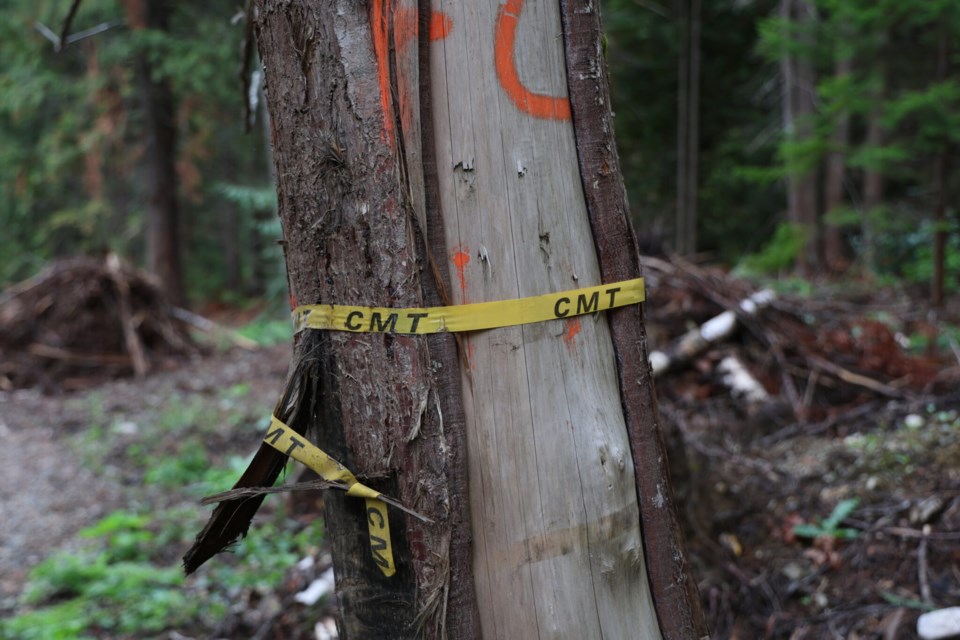Lil’wat Forest Ventures (LFV) is the focus of the first episode of a new documentary series launched by the B.C. Silviculture Innovation Program (SIP). The multi-part series, Out On A Limb, is sharing innovative forest management practices from around the province.
“The series helps tell stories to inspire and motivate practitioners who are carrying out innovative forestry practices by celebrating creative solutions to complex problems,” shared SIP extension specialist Gillian Chow-Fraser in a release.
Silviculture refers to the growing and cultivation of trees with the goal of meeting a diverse range of social and economic needs.
The B.C. SIP was born of the 2020 Old Growth Strategy Review, which provided 14 recommendations for old-growth forest management aimed at boosting the adoption of alternative forestry practices in the province. Recommendation 12 calls for the creation of “a silviculture innovation program aimed at developing harvesting alternatives to clearcutting that maintain old forest values.”
In March 2023, the Government of B.C. announced a $10-million investment to establish the Silviculture Innovation Program, administered by the Bulkley Valley Research Centre (BVRC)—A not-for-profit organization operating out of Smithers, B.C.
As part of BVRC’s work to raise awareness of innovative silvicultural practices, it has assembled a documentary to share examples of individuals putting the approach into action.
The inaugural episode, released on March 31, highlights LFV’s “holistic approach” to forest management. Klay Tindall, general manager of LFV, and Jordon Gabriel, forestry technician with LFV, emphasized adaptability, relying on local knowledge and learning from the land as part of their approach to silviculture.
LFV uses thinning techniques to reduce the risk of wildfires and cultural burns to manage for multiple values—including the preservation of old-growth and to support the return of pine mushrooms and huckleberries.
“We need to protect areas, but we also need to manage areas. We’re trying to manage it to what everyone wants and what everybody needs,” Gabriel said in a statement. “For the wildlife, the ecosystem, safety and for community members to get cultural materials from the forest.”
Innovative silviculture programs are intended to move the province’s timber harvesting approach away from clearcut logging that focuses on economic efficiency, and towards a more holistic vision of forestry that respects multiple values, like traditional uses, tourism and education.
Innovative silviculture aims to increase acceptance of non-timber values for forests, improve ecosystem health, increase access to forests by adopting a more gentle approach to harvesting, reduce conflict between multiple land values and increase overall returns by providing seedlings with shelter that wouldn’t be present in a clear-cut forest.
Gabriel noted pine mushrooms have been a particular focus of LFV’s experimental treatments. The fungi are a significant cultural and economic resource for the community. The team has been using cultural burns and thinning methods to open up the forest canopy—or the tops of the trees—creating more favourable conditions for the mushrooms to grow and thrive.
“Elders knew that the Nation was losing its resources because they were not allowed to manage the lands and because fire wasn’t in the ecosystems anymore,” said Gabriel. “Now, we’re trying to find more evidence of how to make resources continuously grow rather than disappear.”
LFV’s approach emphasizes community connections, relying on members’ relationships with the land.
“We’ve always seen the need to do things a little bit differently and provide multiple values from the forest and not just timber,” said Tindall. “Having the local knowledge of our staff of what plants have grown in what areas, and where trees are growing now where they haven’t grown in the past—it takes that long view of the forest to be able to see how it has changed.
“If you’ve got the local people that have that local knowledge and they can continue to gather that information, it is possible.”
SIP’s release said LFV’s approach serves as a reminder of the important role First Nations play in “effective and sustainable forest management.”
“LFV’s work shows the power of learning from community knowledge holders, whose insights span decades,” added Chow-Fraser. “It demonstrates how much can be achieved within existing regulatory frameworks to meet community needs.”
To see the full episode, visit sip.bvcentre.ca/ooal-episode1.





